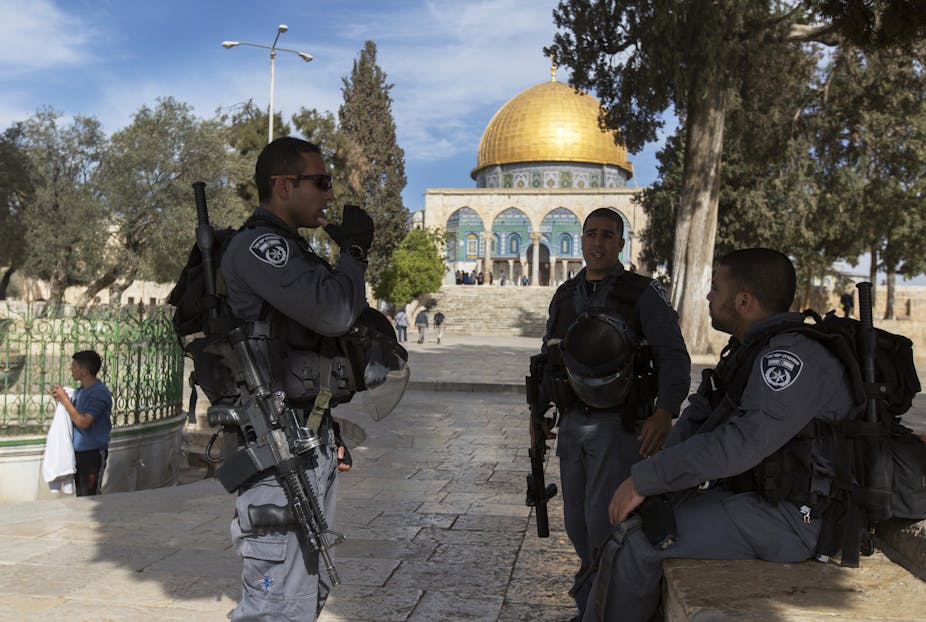The seven-week Gaza War ended inconclusively on August 26. Israel declared victory saying that Hamas was seriously weakened and had achieved none of its aims whereas Hamas claimed to have repelled Israel forces while continuing to be able to fire rockets.
The human costs were great, with more than 2,200 people killed, the great majority of them Palestinian civilians including at least 400 children. Israeli military losses were 66 soldiers with 450 wounded, some of them maimed for life, few compared with the Palestinians but much higher than expected, including many from the elite Golani brigade. The infiltration tunnels, in particular, proved to be very difficult to find and destroy.
In the aftermath, the Gaza economy may now be hugely damaged but Hamas itself has experienced increased support, not just in Gaza but in the West Bank, across the region and beyond. Funds are readily available for reconstruction, but Israel has worked in concert with the al-Sisi government in Cairo to restrict the movement of construction materials.
As winter approaches this is causing considerable anger in Gaza and the West Bank, although the Israeli authorities insist that reconstruction can all too easily be re-directed towards tunnels and missile launchers.
Leaderless intifada
Meanwhile Israeli diplomats are seriously worried about the loss of public support overseas – especially in Western Europe. But the government has a greater concern – an upsurge in insecurity in the West Bank and in Israel itself. This has manifested itself in lone attacks on civilians including knife attacks and the use of vehicles to kill pedestrians.
During the height of the Gaza War there was talk of a new organised Palestinian uprising (intifada). But that was never very likely given the remarkable levels of security control across the West Bank involving strategic roads, road blocks and checkpoints, not to mention the continuing co-operation between Israeli and Palestinian police and security forces.
What worries the Israeli government is the evolution of a leaderless and unpredictable revolt and this is of particular concern when it involves Israeli Arabs acting within Israel. It stems partly from the Gaza War and the lack of rebuilding but has been heightened by the activities of radical Israeli religious groups insisting on the right to pray at the Temple Mount – the Moslem Haram al-Sharif - with some even insisting that the al-Aqsa Mosque and the Dome of the Rock should be replaced by a “Third Jewish Temple”.
What has made tensions even higher has been the determination of the Netanyahu government to usher in a further wave of settlement building, much of it in the East Jerusalem that the Palestinians see as the capital of their future state.
In all, this is proving to be a thoroughly uncertain period for Netanyahu’s government and does much to explain John Kerry’s visit to the region this week.
Unlikely allies
For the Israelis, though, the one development that remains helpful is the rise of Islamic State in Syria and Jordan. In their relations with Washington, successive Israeli governments were long able to portray the country as a bastion of Western influence in the face of Soviet regional ambition. After the Cold War, the 1990s proved more difficult – but by the end of the decade there were new threats: al-Qaida, the Iraqis and especially the Iranians and their presumed nuclear weapons programme.
Then, a year or so ago things were looking difficult once more. Saddam Hussein was long gone, the US had withdrawn from Iraq, al-Qaida was diminished and there was a worrying rapprochement under way between Washington and Tehran. That is still the case and it is here that the rise of Islamic State has been something of a god-send. Once again, Israel is a powerful ally for the US against a common enemy.
But this also suits the Islamic State propagandists. Indeed the Gaza War has been a gift to them, not least in the opposition it has stirred up among young Muslims in Western Europe. In the UK, for example, teachers in schools with many Muslim students have been reporting a degree of bitterness and anger, even expressed by children as young as seven or eight, which they have not seen for a long time.
Islamic State itself is under some pressure from the coalition air strikes and will be facing another 1,500 US troops in the coming weeks, some of them in the areas of greatest conflict, but this is far from critical – and the decision of the powerful Egyptian paramilitary group, Ansar Beit al-Maqdis, to support it has been a welcome step.
Israel, with its very close links with the United States, and its recent war in Gaza is therefore really helpful as Islamic State seeks more recruits from Europe. It may seem extraordinary that Israel and the Islamic State – such different entities – should find each other serving a useful role, but that is a marker for the current fractured state of politics in the Middle East.

